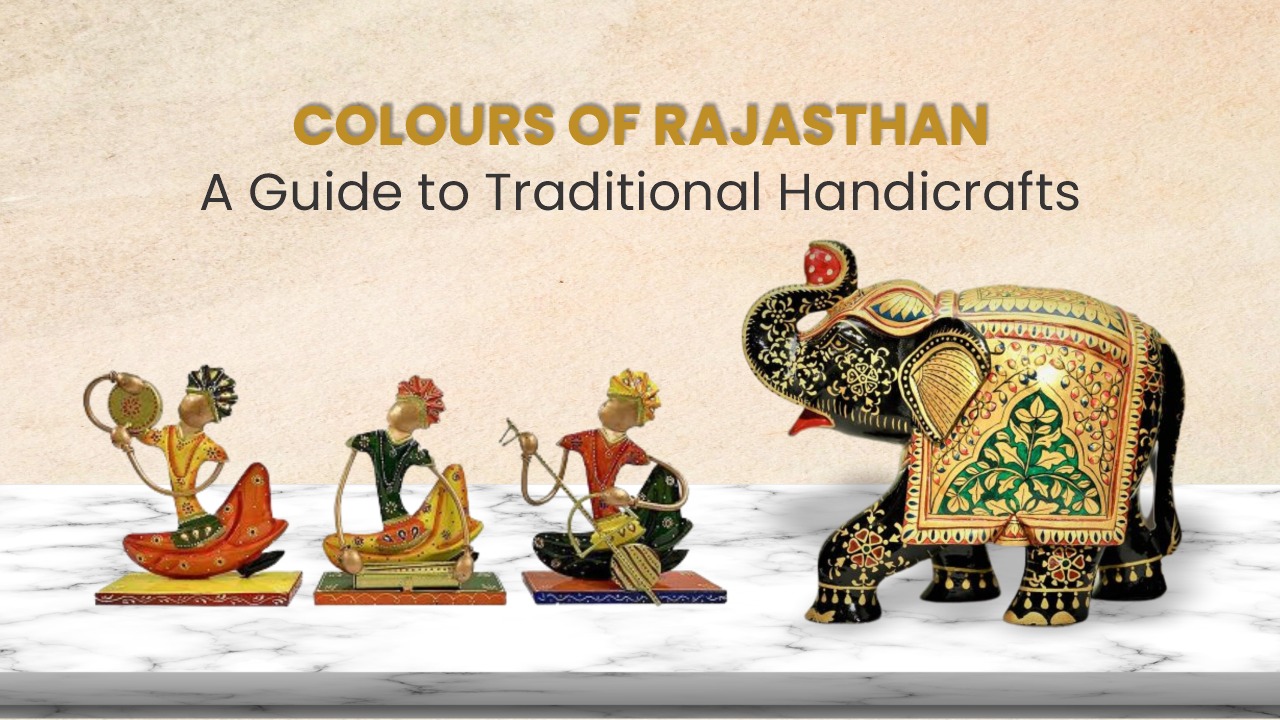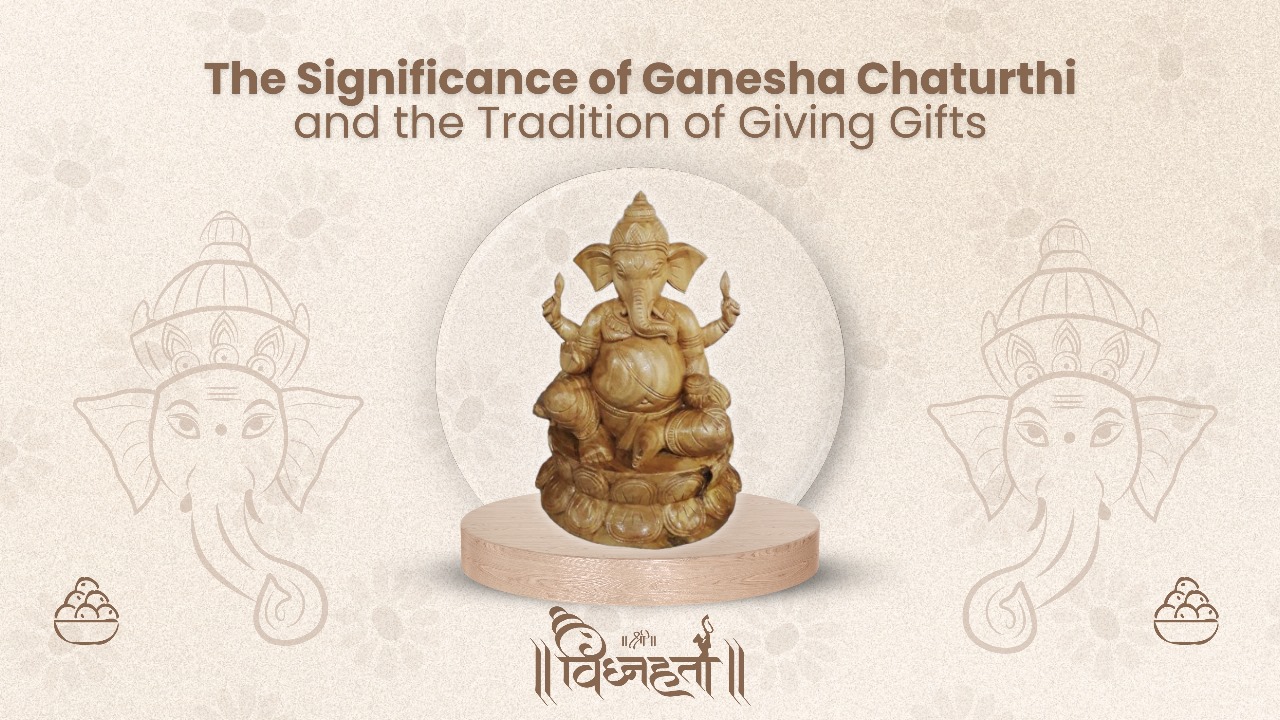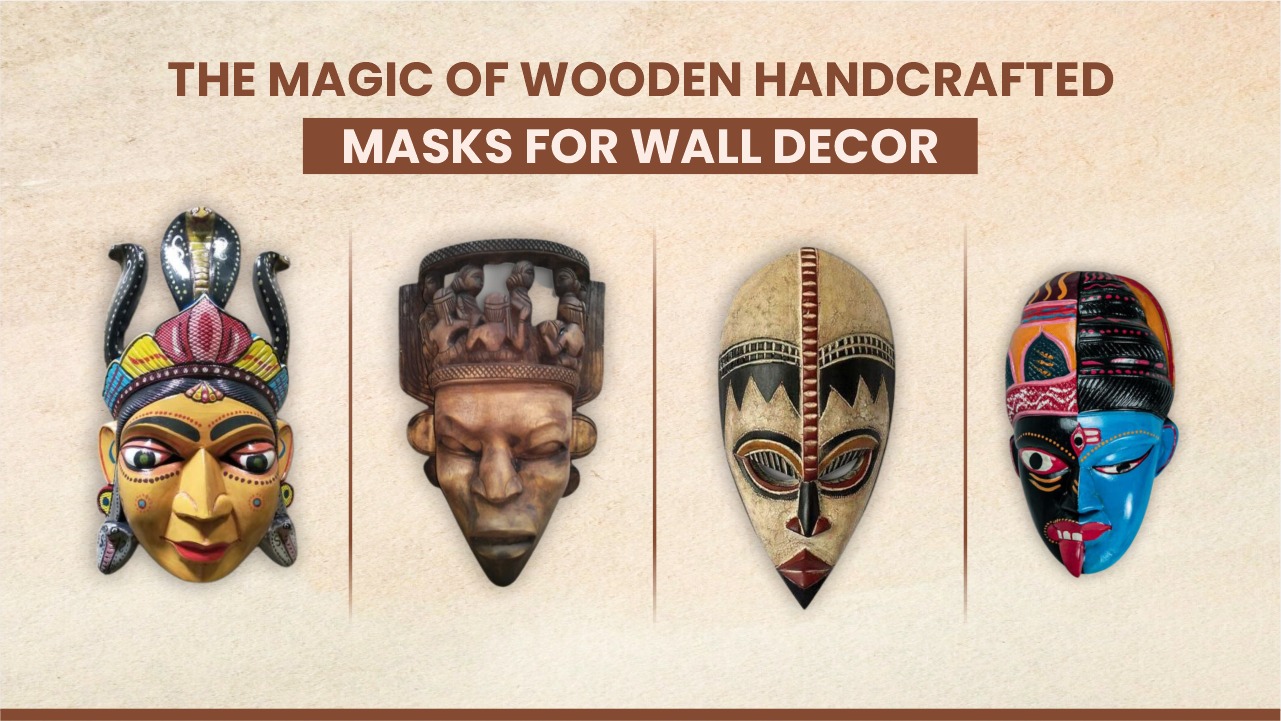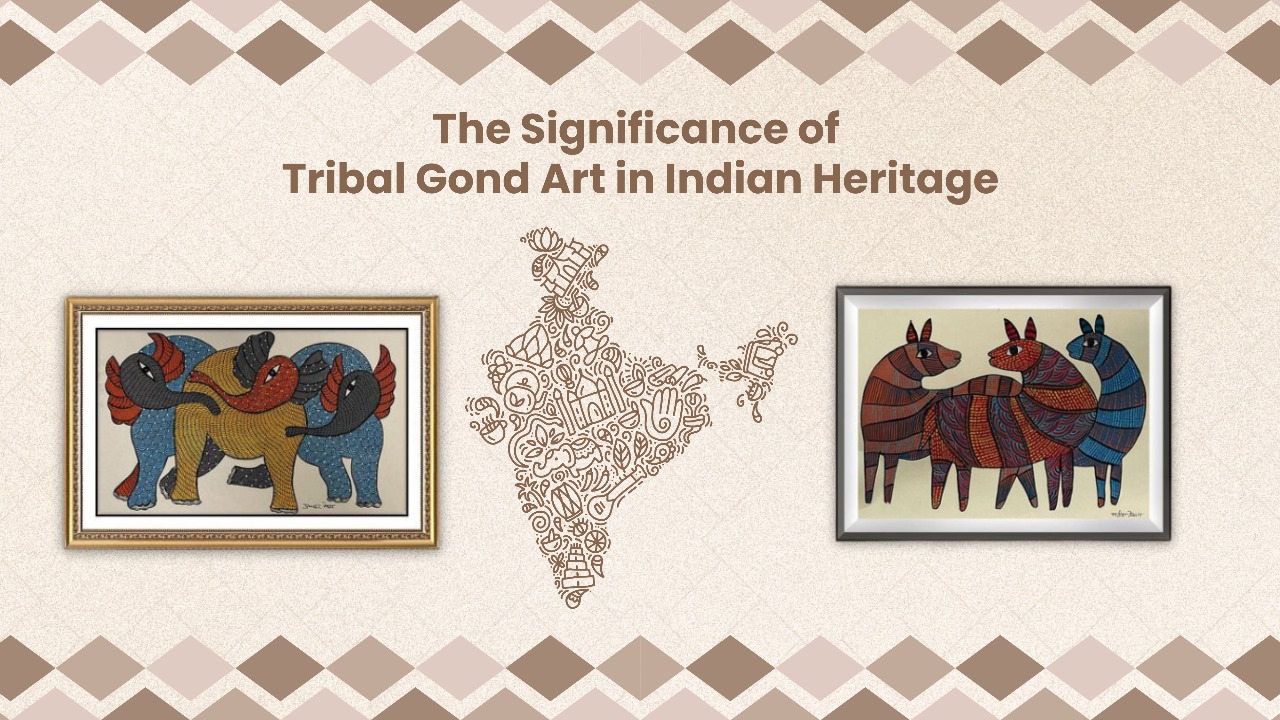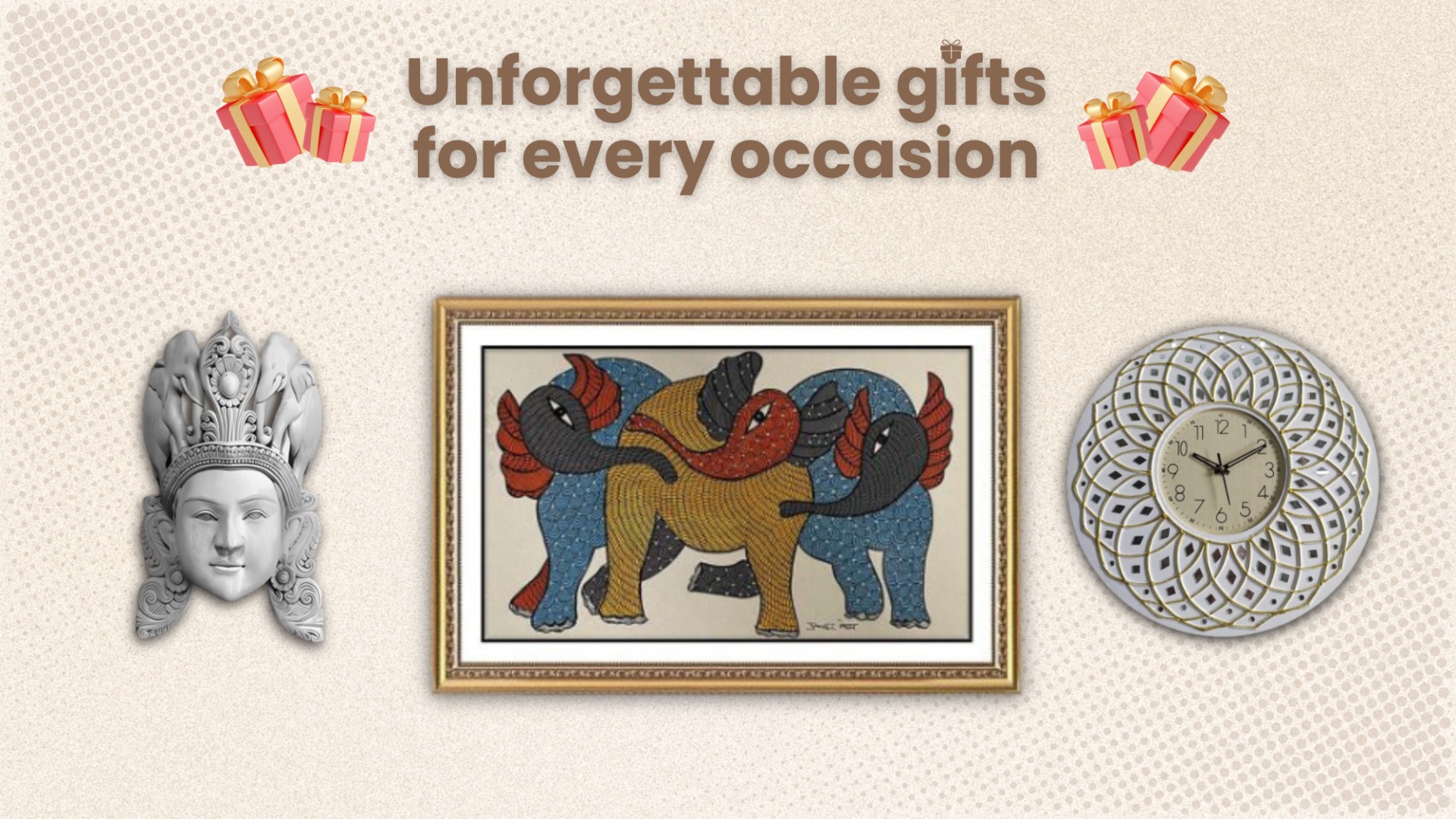Blogs
Colours of Rajasthan: A Guide to Traditional Handicrafts
“Rajasthan”, the name itself announces it as the place of kings! Among the states of India it is one of the crest-jewels which beckons not only with its royal wonders but also with a vivid array of history, culture, and Traditional Handicrafts tradition. Standing proudly in the northwestern corner of the Indian subcontinent, the enchanting state is often referenced as a historical and cultural treasure trove, and rightfully so. It is a place where time seems to have stood still, thanks to the timelessness of the age-old customs and the arts and crafts that have been passed down over centuries.
Celebrate The Festive Season with Festive Gifts
From the spirituality of Navratri, the nine nights dedicated to the divine feminine energy, to Karva Chauth, a celebration of marital bonds and love, to the grandeur of Diwali, the festival of lights, symbolising the victory of good over evil, and finally, to the global charm of Christmas, these festivals paint a vivid tapestry of emotions, celebrations, and cherished traditions. Festive gifting is an enduring ritual that transcends time, uniting billions of hearts with celebration, gratitude and joy.
The Rich Heritage of Indian Folk Paintings
A journey across India, either from north to south or east to west, will let you experience cultures, attire, food, languages and arts as diverse as the geographies and the people that you meet. But these differences do not appear abruptly. Instead, it feels as if each unique culture blends into the next forming a paradoxically single but not homogeneous, giant, beautiful mosaic. India thus, is a treasure trove of fine, heritage arts where every artistic stroke narrates a story possibly as ancient as the land itself. In this vibrant tapestry of heritage, folk paintings stand as vivid chapters that illuminate the nation's history and soul.
The Significance of Ganesha Chaturthi and the Tradition of Giving Gifts
Among the pantheon of Indian Gods and Goddesses, one of the most popular and loved forms is that of Lord Ganesha. The elephant-headed God is recognised by people across religions and regions. He is loved by the children and elders alike. Therefore, it is not surprising that Ganesha Chaturthi, the festival celebrating Lord Ganesha which arrives in the Indian month of Bhadrapada, is celebrated with much fervour and festivity across the globe. Clay idols of Ganapati (as he is also called) are brought home and worshipped before they are immersed in water bodies like lakes, rivers and the seas.
The Magic of Wooden Handcrafted Masks for Wall Decor
Masks, with their ability to hide and reveal at the same time, have held an enduring fascination across civilizations through time. They have been more than mere adornments - they are representatives of traditions, beliefs, and artistic expressions. They are ubiquitous in their presence in the rituals of ancient civilizations and pop culture through the ages. Historically, masks were used in performances and were believed to endow the performer with special, higher powers. Throughout time, masks have been used to strongly enhance certain aspects of a personality or character while casting an air of intrigue person behind the mask.
The Significance of Tribal Gond Art in Indian Heritage
The story of India is a colourful and vibrant tapestry with multicolour threads of cultures, artistic expressions and languages. Some of the richest threads in this tapestry are contributed by the indigenous Gond tribe who inhabit multiple states across India including Andhra Pradesh, Bihar, Chhattisgarh, Madhya Pradesh, Maharashtra, Odisha, Telangana and Uttar Pradesh. Named from the Dravidian expression - Kond - which means ‘mountain’, this tribal community thrived in the hills and have been residents of India for more than 1400 years! There were more than 11 million Gondi people in the country as per the 2011 census.
Handcrafted Delights - Unforgettable Gifts for Every Occasion
There is something magical about handcrafted products! They seem to possess an unmatched uniqueness and finesse that sets them a class apart. Diving a bit deeper, we realise this is to be expected because the touch of skilled artisan infuses each handmade creation with a distinctive charm. With meticulous attention to detail, handcrafted goods become individual masterpieces, reflecting the toils, passions and creativities of their makers. They exude a soulful beauty that resonates with those who appreciate craftsmanship. Each handcrafted piece tells a story, forging a personal connection between the creator and the beholder, making them truly incomparable and cherished.
The History of Madhubani art Paintings: A Rich Tapestry of Artistic Heritage
Step into a kaleidoscope of colours, where brushstrokes dance to the rhythm of tradition and imagination. Welcome to the mesmerising world of Madhubani art paintings, where vibrant hues collide with intricate detailing to create a visual symphony that leaves your senses spellbound. Like ancient whispers on the canvas, these artworks carry the tales of Mithila, Bihar, blending mythology, nature, and daily life into a tapestry of wonder.
The Timeless Charm of Warli Art Paintings
The Warli tribe, one of the largest tribes in India, have kept alive for over a millennium a tradition and art form that is unique to them and their way of life. Preserved from the ravages of time, this art form today decorates innumerable public and private spaces across India and abroad. The enchanting world of Warli art paintings is a magical realm where simplicity and geometry meet artistic brilliance. Originating from the Warli tribal communities of Maharashtra and its neighbouring states, this is a traditional form of tribal wall painting that has captivated the imaginations of art enthusiasts for centuries.
The Ancient Lost Wax Art of Dhokra
Let’s embark on a journey that transcends time and space, as we delve into the captivating realms of the ancient lost wax art of Dhokra. This extraordinary art form, steeped in history and shrouded in mystique, has its roots in the ancient Indus Valley Civilization where metalwork flourished as a form of creative expression more than 4000 years ago. Dhokra derives its name from the Dhokra Damar tribe, whose skilled metalsmiths utilise a unique technique combining clay and wax moulds to fashion exquisite figurines.
While the essence of Dhokra remains consistent across regions, there are subtle variations between the Dhokra art in different regions. For instance, in Odisha, Dhokra artists, like those in Nabajibanpur, craft brass figurines of gods, goddesses, and mythical beasts. In neighbouring Chhattisgarh, the focus is also on creating human and animal forms.
Mud Painting Across Cultures: Perspectives on an Ancient Art Form
Human imagination and ingenuity have no limits and mud painting is an ancient art form that amply demonstrates this. It actually involves using mud as the primary material for creating paintings! This art form dates back to prehistoric times and has been practised across various cultures for thousands of years. Preparing a painting surface with mud collected from a riverbank or a lake is not only cost-effective, but also helpful in preserving the paintings for an extended period.
Mud painting has been an integral part of many cultures. In Africa, for example, traditional mud painting techniques are used to create intricate designs on the walls of homes and buildings. These designs often have symbolic meanings and are used to ward off evil spirits or to celebrate important events. In South America, indigenous communities have been using mud painting techniques for centuries with designs that often incorporate traditional symbols and imagery that have been passed down through generations. In Asia, countries like China and Japan have a long tradition of using mud painting techniques to create beautiful and intricate works of art. Chinese mud paintings often feature landscapes and scenes from nature, while Japanese mud paintings often depict animals or mythological creatures.
The Importance of Preserving Traditional Tribal & Folk Paintings
India is a country that boasts of a rich cultural heritage, with diverse artistic practices and traditions. Among the unique forms of art in India is the traditional tribal art paintings, created by various tribal communities across the country. They say that a picture speaks a thousand words. Well, a tribal art painting speaks a thousand other things as well because it not only showcases the creativity and artistic skills of these communities, but also their diverse religious beliefs, social practices, and cultural traditions.
The Spectacular Art of Marble & Stone Craft
Marble carving has been a cherished art form throughout the ages, with its rich history and cultural significance making it a valuable investment for art collectors and enthusiasts. From the intricate works of ancient Greece and Rome to the masterpieces of the Renaissance era, sculptors have used marble to create some of the world's most iconic works of art.
Marble work in India has been a cornerstone of the country's rich heritage. Cherished for centuries, it has had a profound impact on the country's art and architecture. From grand palaces to intricately carved temples, marble has been the luxurious material of choice. Its delicate beauty and strength have made it a prized material for sculptures and monuments. The iconic Taj Mahal, which is listed amongst the 7 wonders of the modern world, is a structure made completely of marble.
Today, marble carving continues to hold great cultural value, with many skilled artisans and artists continuing to create breathtaking sculptures and showpieces with this timeless material. Marble's versatility and beauty makes it a popular choice as the construction material for many famous buildings and monuments worldwide, adding to its cultural importance.
The Making Of The Precious ‘Flying Carpets’
The crest jewel of India, Kashmir, is also one of the foremost geographies in the world where the ancient art of handcrafting exquisite carpets is preserved and practised to this day. Hand Knotted Kashmiri carpets are symbols of true luxury and represent the pinnacle of craftsmanship, artistry, and tradition. Owning one makes us understand why folklore is rich with flying carpets - you are sure to be on cloud nine possessing it!
Kashmiri hand-knotted silk carpets are not just carpets, they are pieces of art that are crafted by skilled artisans with utmost care and precision. It all begins with sourcing and the highest quality silk imported from other regions of India or neighbouring countries. The silk is then carefully sorted and spun into fine threads that are used to weave the carpets. The weavers use a hand-knotting technique that has been passed down through generations, where each knot is tied by hand to create the intricate and highly detailed patterns.
The Beautiful Craft of Copper Bells
It's hard to imagine the beautiful landscape of rural India without the resonant sound of bells, echoing through the fields and pastures. For centuries, these bells have been an indispensable tool for farmers, used to identify their cattle as they graze, to keep track of them, and to locate them when they stray too far. But the humble bell has come a long way since its inception, and today it is an exquisite decorative piece adorning homes, temples, and other religious and cultural establishments.


 USD
USD  GBP
GBP EUR
EUR AED
AED


